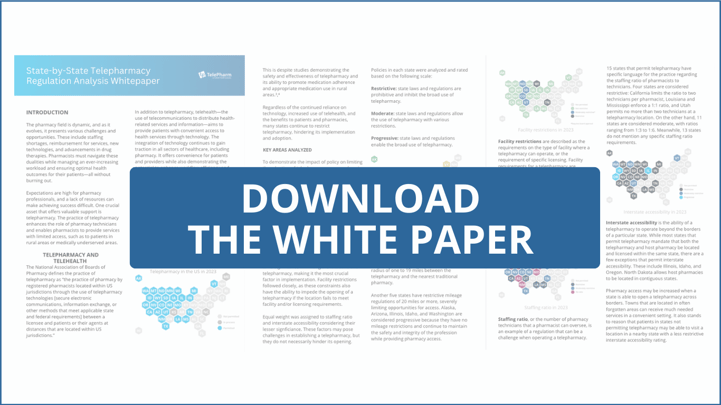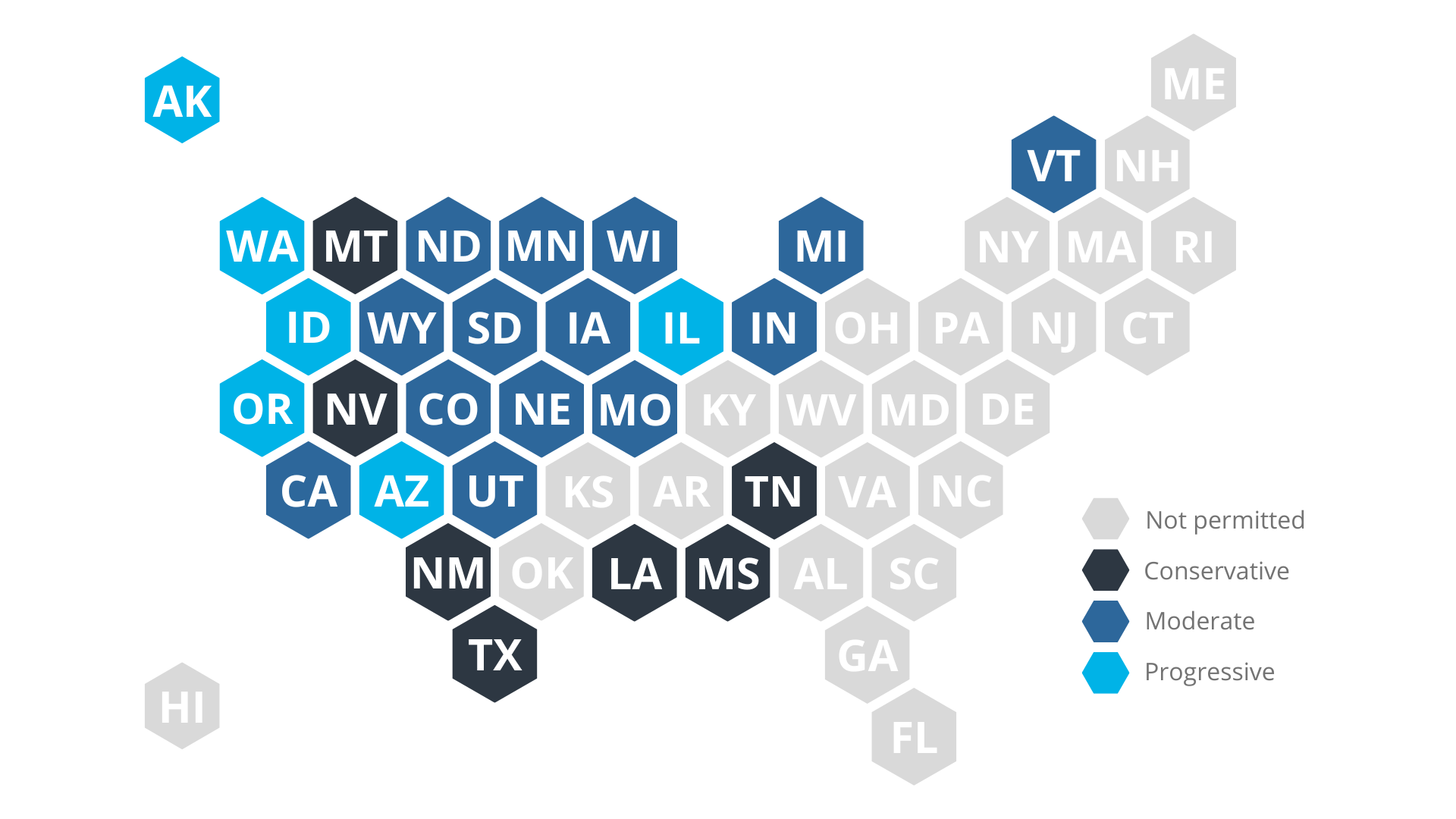The pharmacy field is dynamic, and as it evolves, it presents various challenges and opportunities. These include staffing shortages, reimbursement for services, new technologies, and advancements in drug therapies. Pharmacists must navigate these dualities while managing an ever-increasing workload and ensuring optimal health outcomes for their patients—all without burning out.
Want the PDF version of this white paper?
INTRODUCTION
Expectations are high for pharmacy professionals, and a lack of resources can make achieving success difficult. One crucial asset that offers valuable support is telepharmacy. The practice of telepharmacy enhances the role of pharmacy technicians and enables pharmacists to provide services with limited access, such as to patients in rural areas or medically underserved areas.
TELEPHARMACY AND TELEHEALTH
The National Association of Boards of Pharmacy defines the practice of telepharmacy as “the practice of pharmacy by registered pharmacists located within US jurisdictions through the use of telepharmacy technologies [secure electronic communications, information exchange, or other methods that meet applicable state and federal requirements] between a licensee and patients or their agents at distances that are located within US jurisdictions.”
In addition to telepharmacy, telehealth—the use of telecommunications to distribute health-related services and information—aims to provide patients with convenient access to health services through technology. The integration of technology continues to gain traction in all sectors of healthcare, including pharmacy. It offers convenience for patients and providers while also demonstrating the potential to enhance workflow efficiency and safety. A notable example is ePrescribing workflows, which increase adherence therefore reducing errors and adverse reactions.¹
Telehealth is allowed in some form in all 50 states and experienced significant growth during the COVID-19 pandemic.² However, while telepharmacy has gained popularity, it has not received the same level of support as telehealth. Although over half the country does permit the practice on some level, 22 states have either not implemented telepharmacy in any capacity or have done so with policies that significantly limit the practice.
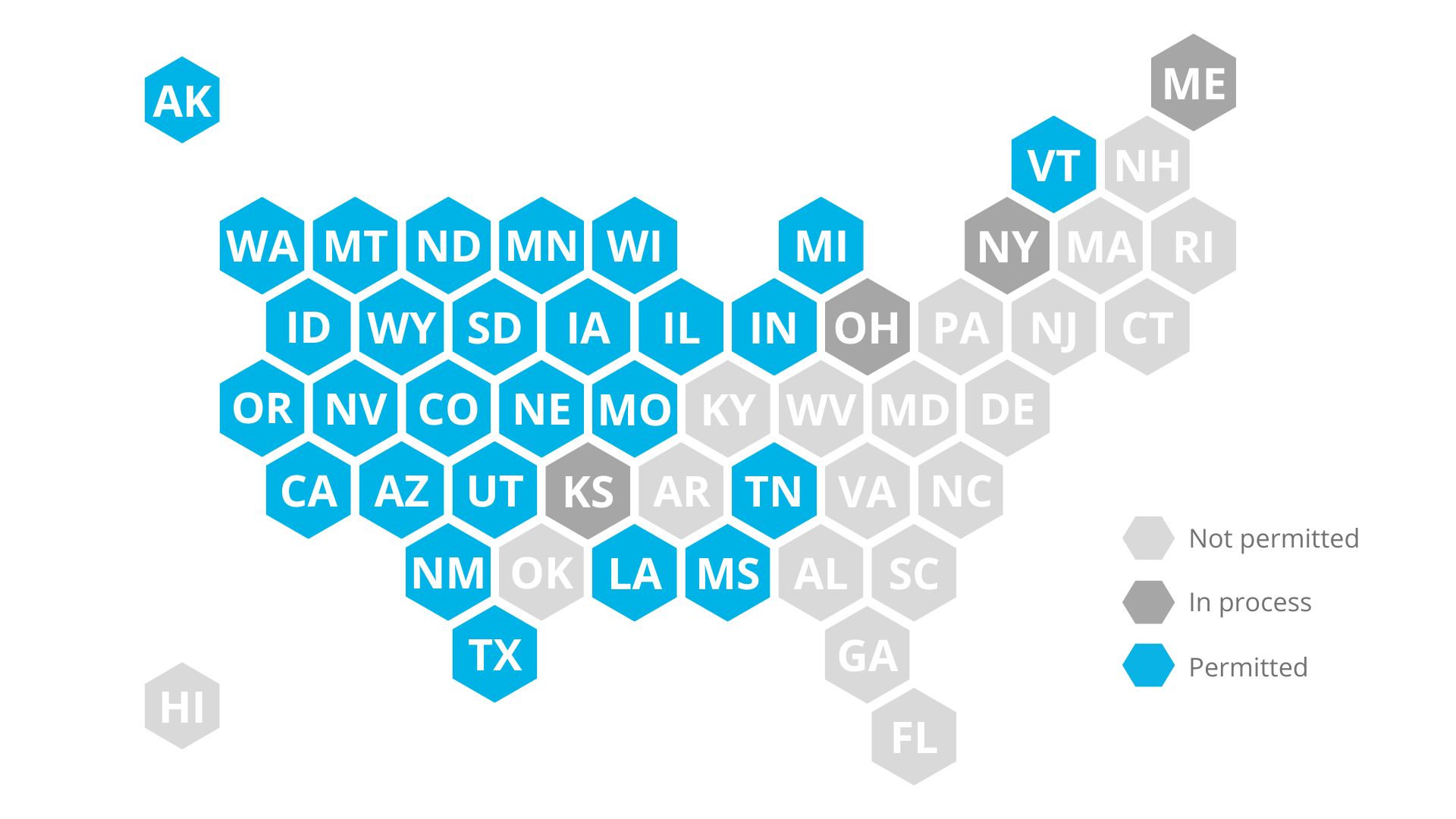
Telepharmacy in the US in 2023
This is despite studies demonstrating the safety and effectiveness of telepharmacy and its ability to promote medication adherence and appropriate medication use in rural areas.³,⁴
Regardless of the continued reliance on technology, increased use of telehealth, and the benefits to patients and pharmacies, many states continue to restrict telepharmacy, hindering its implementation and adoption.
KEY AREAS ANALYZED
To demonstrate the impact of policy on limiting the adoption of telepharmacy, a comprehensive analysis was conducted. This examination focused on four key areas of telepharmacy policy in all 50 states and assigned a rating to each state based on these areas. Regulations were mileage, facility restrictions, staffing ratios and interstate accessibility. The grading table was adapted from a survey by Manatt Health⁵ that analyzed common regulatory parameters for telehealth and factors related to Medicaid.
In the process of calculating the ratings for each state, varying weights were assigned to the four key areas, considering their influence on the permissibility of telepharmacy. Mileage was accorded the highest value due to its significance in limiting the locations of a telepharmacy, making it the most crucial factor in implementation. Facility restrictions followed closely, as these constraints also have the ability to impede the opening of a telepharmacy if the location fails to meet facility and/or licensing requirements.
Equal weight was assigned to staffing ratio and interstate accessibility considering their lesser signficiance. These factors may pose challenges in establishing a telepharmacy, but they do not necessarily hinder its opening.
Policies in each state were analyzed and rated based on the following scale:
Restrictive: state laws and regulations are prohibitive and inhibit the broad use of telepharmacy.
Moderate: state laws and regulations allow the use of telepharmacy with various restrictions.
Progressive: state laws and regulations enable the broad use of telepharmacy.
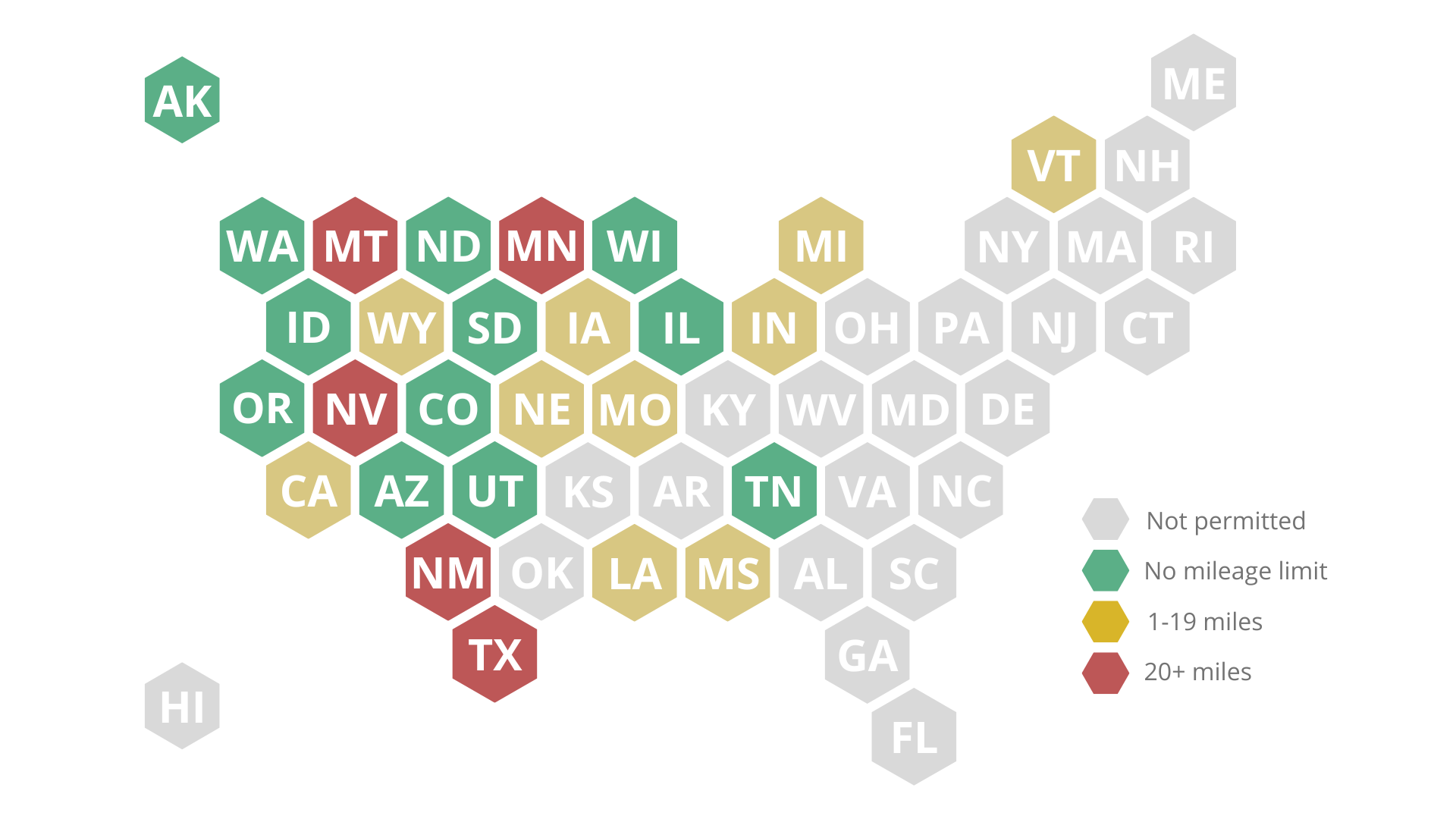
Mileage restrictions in 2023
Mileage restrictions are defined as the distance limitation between a telepharmacy and the nearest pharmacy. Of the states permitting telepharmacy, 11 have moderate restrictions on mileage. These restrictions include provisions such as maintaining a radius of one to 19 miles between the telepharmacy and the nearest traditional pharmacy.
Another five states have restrictive mileage regulations of 20 miles or more, severely limiting opportunities for access. Alaska, Arizona, Illinois, Idaho, and Washington are considered progressive because they have no mileage restrictions and continue to maintain the safety and integrity of the profession while providing pharmacy access.
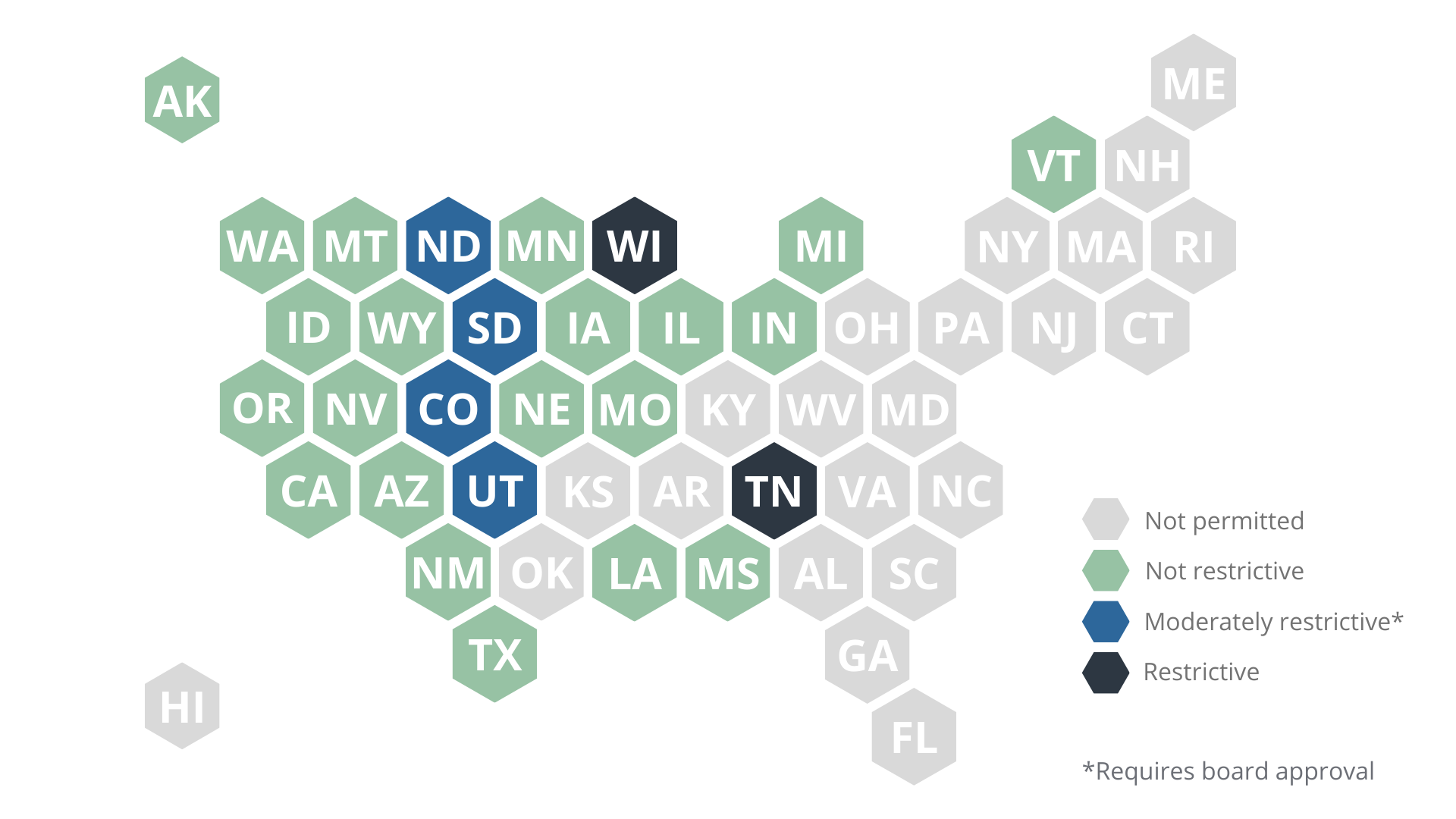
Facility restrictions in 2023
Facility restrictions are described as the requirements on the type of facility where a telepharmacy can operate, or the requirement of specific licensing. Facility requirements for a telepharmacy are generally the same as those for a traditional pharmacy. Some states do require specific provisions, like a minimum pharmacy size of 300 square feet in Arizona and Mississippi.
Colorado, North Dakota, South Dakota, and Utah allow telepharmacies to open within areas of need, which is further defined in law or regulation. But, they do require approval from the Board of Pharmacy. Wisconsin and Tennessee require a telepharmacy to be located within a clinic or FQHC.
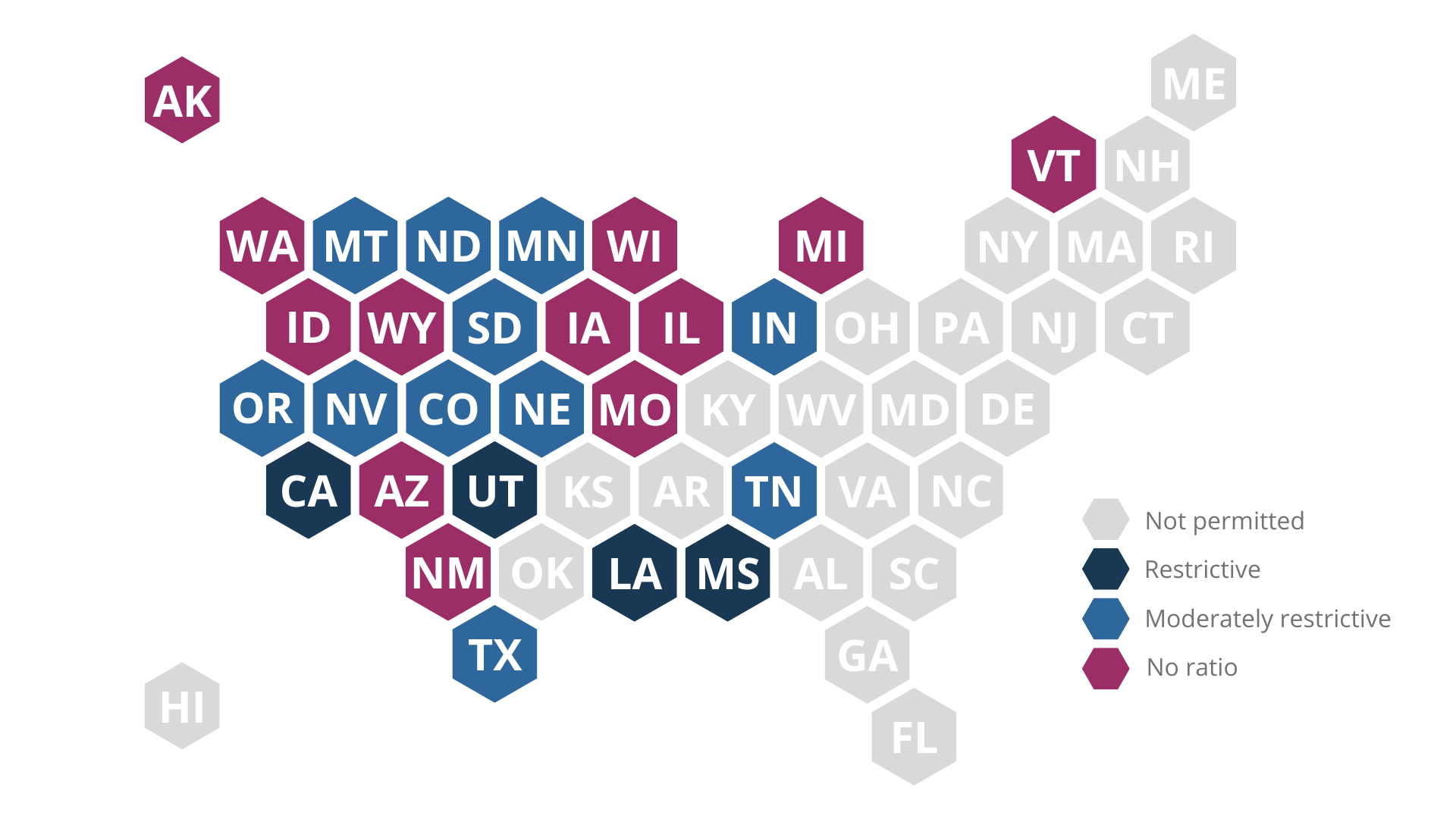
Staffing ratio in 2023
Staffing ratio, or the number of pharmacy technicians that a pharmacist can oversee, is an example of a regulation that can be a challenge when operating a telepharmacy.
15 states that permit telepharmacy have specific language for the practice regarding the staffing ratio of pharmacists to technicians. Four states are considered restrictive: California limits the ratio to two technicians per pharmacist, Louisiana and Mississippi enforce a 1:1 ratio, and Utah permits no more than two technicians at a telepharmacy location. On the other hand, 11 states are considered moderate, with ratios ranging from 1:3 to 1:6. Meanwhile, 13 states do not mention any specific staffing ratio requirements.
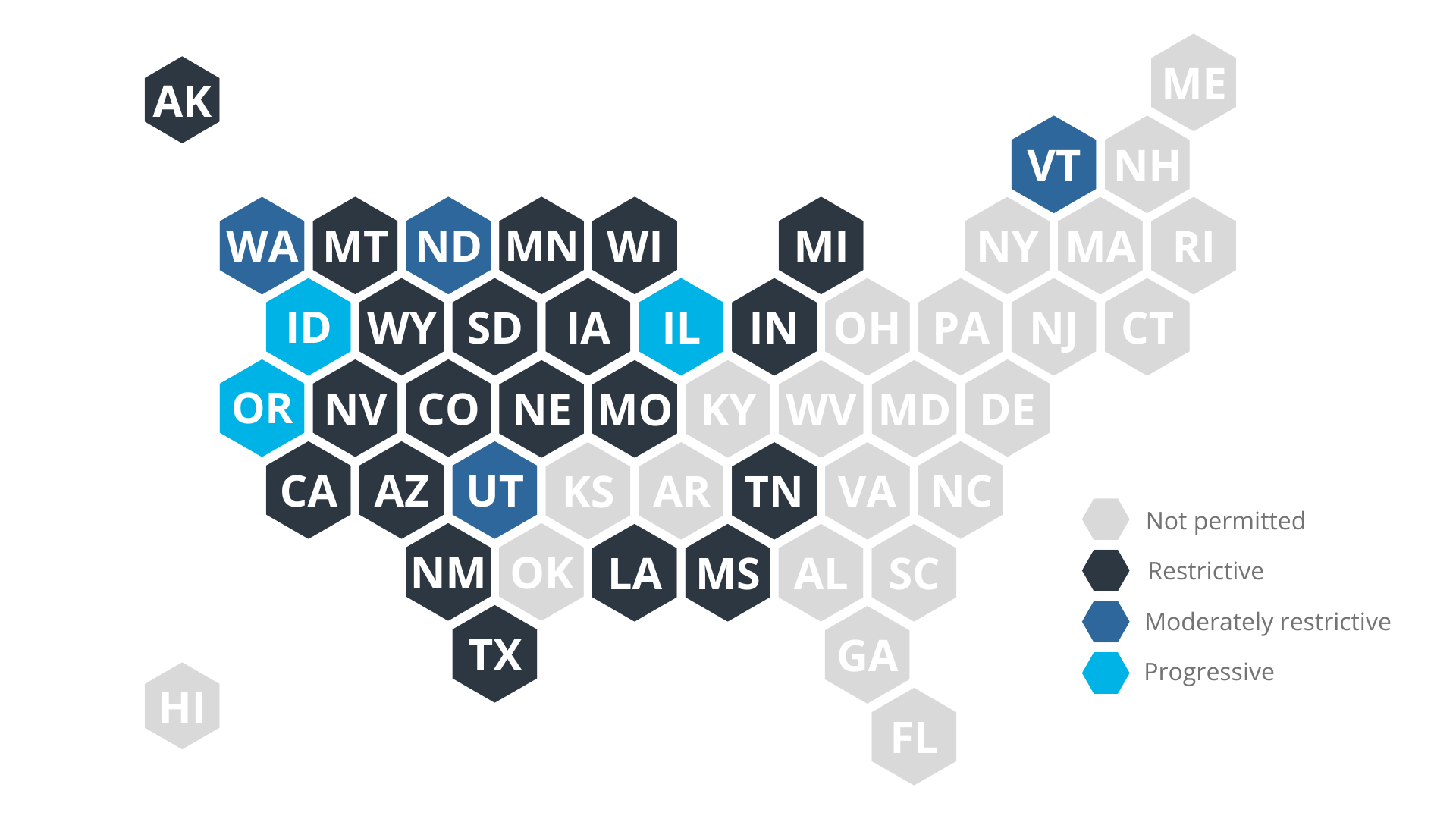
Interstate accessibility in 2023
Interstate accessibility is the ability of a telepharmacy to operate beyond the borders of a particular state. While most states that permit telepharmacy mandate that both the telepharmacy and host pharmacy be located and licensed within the same state, there are a few exceptions that permit interstate accessibility. These include Illinois, Idaho, and Oregon. North Dakota allows host pharmacies to be located in contiguous states.
Pharmacy access may be increased when a state is able to open a telepharmacy across borders. Towns that are located in often forgotten areas can receive much needed services in a convenient setting. It also stands to reason that patients in states not permitting telepharmacy may be able to visit a location in a nearby state with a less restrictive interstate accessibility rating.
Overall telepharmacy grades in 2023
POLICY OVERVIEW
As of July 2023, 22 states do not permit telepharmacy, and seven states have an overall telepharmacy grade of restrictive. These 7 states allow the practice, but their regulations are prohibitive and inhibit telepharmacy on a broader scale. Fifteen states have an overall telepharmacy grade of moderate. These states have more permissive regulations, but there is room for improvement, especially when it comes to mileage. When policy is progressive, such that there is no mileage restriction, pharmacists can provide convenient pharmacy access to patients across the state without unnecessary barriers to their provision of care.
Only six states have an overall telepharmacy grade of progressive: Alaska, Arizona, Idaho, Illinois, Oregon, and Washington. These states have no mileage limits and are not restrictive concerning facilities, which is important as these two categories tend to have a large impact on patient health outcomes. Illinois, an early adopter of the practice, has no mileage restrictions and has seen a high adoption rate of the practice, with around 200 telepharmacies operating in 2023.
CONCLUSION
Telepharmacy has grown and will become even more vital in the coming years as pharmacists and pharmacy owners search for safe and effective ways to expand their patient reach, mitigate staffing challenges, remain financially viable amid external threats to their industry and businesses, and provide essential pharmacy services to their communities.
Since our last white paper in 2018, Washington, Oregon, Missouri, and Michigan have adopted the practice of telepharmacy, Colorado and Alaska have removed their previous mileage restrictions, and Vermont is in the process of loosening restrictions. However, 22 states still do not allow telepharmacy, even though it has been demonstrated to be safe and effective.
The information in this analysis is meant to educate key stakeholders about the current state of telepharmacy regulations and serve as a baseline for marking the progress of more progressive telepharmacy regulations to come.
Notes: Telepharmacy in this analysis refers to remote dispensing and remote counseling in an outpatient or retail setting.
Although Kansas law was effective in 2023, parameters were pending at the time of this white paper.
If you want to see what our map looked like just five years ago, check out our 2018 white paper.
Want to just learn more about how telepharmacy works and the impact it can have on your pharmacy and patients? Click below to watch a short informational video:
References
1. 5 Effective Ways ePrescribing Improves Patient Safety and Streamlines Physician Workflow -. Published August 5, 2020. Accessed June 21, 2023. https://thejournalofmhealth.com/5-effective-ways-eprescribing-improves-patient-safety-and-streamlines-physician-workflow/
2. U.S. Government Accountability Office. Telehealth in the Pandemic—How Has It Changed Health Care Delivery in Medicaid and Medicare? www.gao.gov. Published September 29, 2022. https://www.gao.gov/blog/telehealth-pandemic-how-has-it-changed-health-care-delivery-medicaid-and-medicare
3. Friesner DL, Scott DM, Rathke AM, Peterson CD, Anderson HC. Do remote community telepharmacies have higher medication error rates than traditional community pharmacies? Evidence from the North Dakota Telepharmacy Project. Journal of the American Pharmacists Association. 2011;51(5):580-590. doi:https://doi.org/10.1331/japha.2011.10115
4 Pathak S, Haynes M, Qato DM, Urick BY. Telepharmacy and Quality of Medication Use in Rural Areas, 2013–2019. Preventing Chronic Disease. 2020;17. doi:https://doi.org/10.5888/pcd17.200012
5. State Telehealth Laws and Medicaid Policies: 50-State Survey Findings. Manatt. Published 2020. https://www.manatt.com/insights/newsletters/manatt-on-health/state-policy-levers-for-telehealth-50-state-surve
